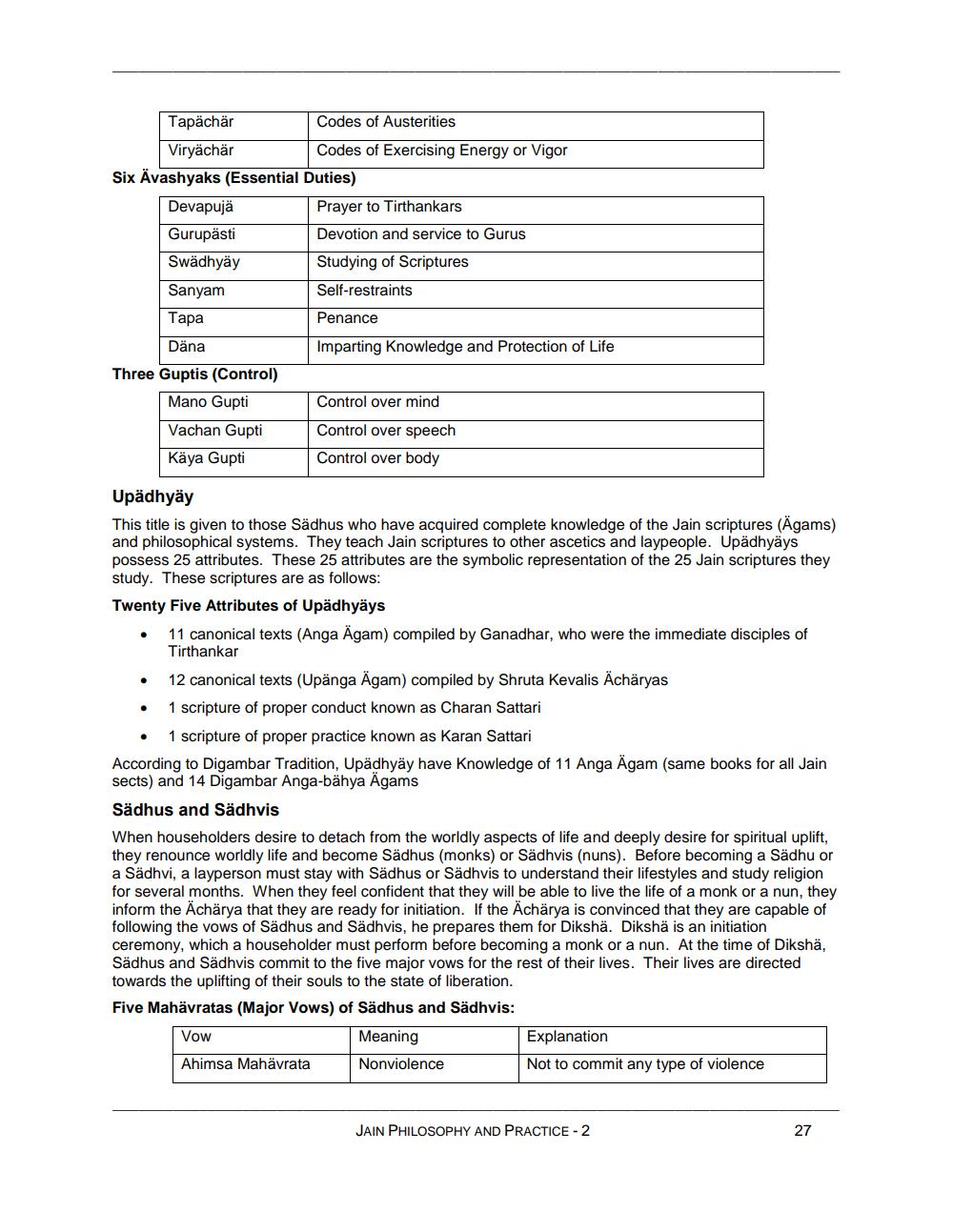________________
Tapächär
Viryächär
Six Ävashyaks (Essential Duties)
Devapuja
Gurupästi
Swädhyäy
Sanyam
Tapa
Däna
Three Guptis (Control)
Mano Gupti
Vachan Gupti
Käya Gupti
Codes of Austerities
Codes of Exercising Energy or Vigor
•
Prayer to Tirthankars
Devotion and service to Gurus
Studying of Scriptures
Self-restraints
Penance
Imparting Knowledge and Protection of Life
Control over mind
Control over speech
Control over body
Upadhyay
This title is given to those Sädhus who have acquired complete knowledge of the Jain scriptures (Ägams) and philosophical systems. They teach Jain scriptures to other ascetics and laypeople. Upadhyays possess 25 attributes. These 25 attributes are the symbolic representation of the 25 Jain scriptures they study. These scriptures are as follows:
Twenty Five Attributes of Upädhyäys
11 canonical texts (Anga Ägam) compiled by Ganadhar, who were the immediate disciples of Tirthankar
12 canonical texts (Upänga Ägam) compiled by Shruta Kevalis Ächäryas
1 scripture of proper conduct known as Charan Sattari
1 scripture of proper practice known as Karan Sattari
According to Digambar Tradition, Upadhyay have Knowledge of 11 Anga Ägam (same books for all Jain sects) and 14 Digambar Anga-bähya Ägams
Sädhus and Sädhvis
When householders desire to detach from the worldly aspects of life and deeply desire for spiritual uplift, they renounce worldly life and become Sädhus (monks) or Sädhvis (nuns). Before becoming a Sädhu or a Sädhvi, a layperson must stay with Sädhus or Sädhvis to understand their lifestyles and study religion for several months. When they feel confident that they will be able to live the life of a monk or a nun, they inform the Ächärya that they are ready for initiation. If the Ächärya is convinced that they are capable of following the vows of Sädhus and Sädhvis, he prepares them for Dikshä. Dikshä is an initiation ceremony, which a householder must perform before becoming a monk or a nun. At the time of Dikshä, Sädhus and Sädhvis commit to the five major vows for the rest of their lives. Their lives are directed towards the uplifting of their souls to the state of liberation.
Five Mahävratas (Major Vows) of Sädhus and Sädhvis:
Vow
Meaning Nonviolence
Ahimsa Mahävrata
Explanation
Not to commit any type of violence
JAIN PHILOSOPHY AND PRACTICE - 2
27




